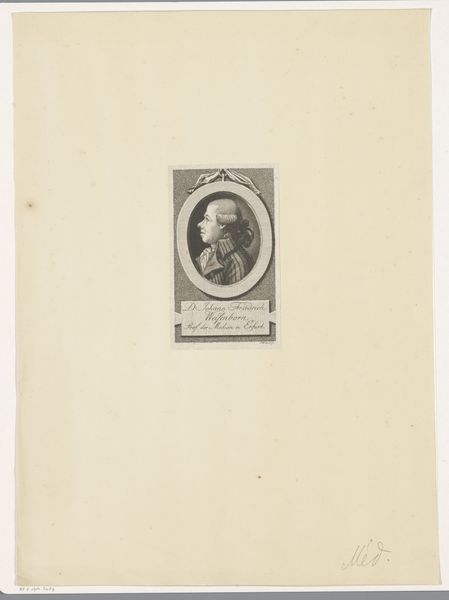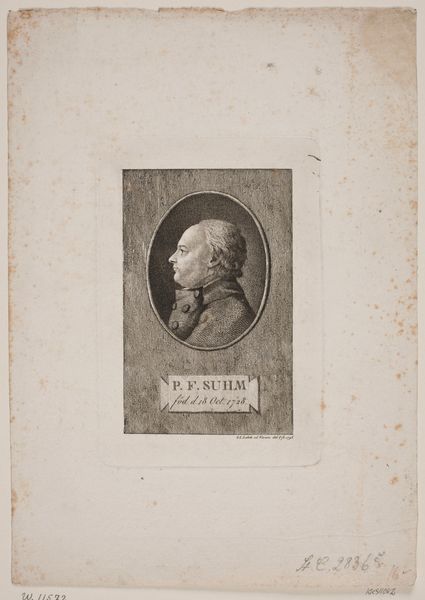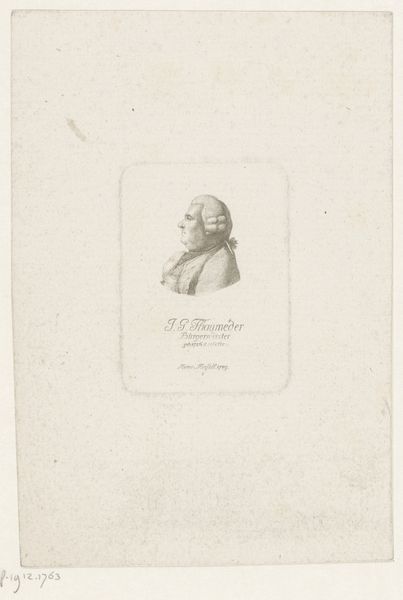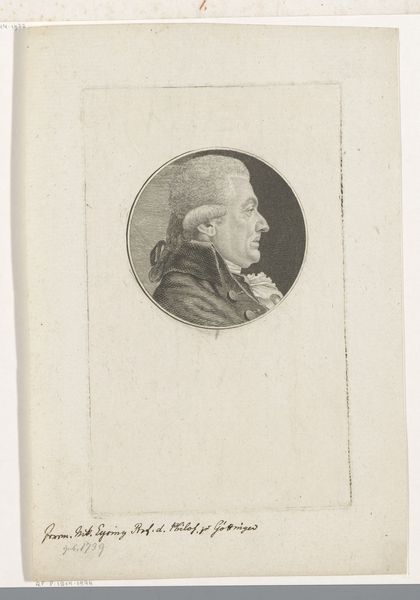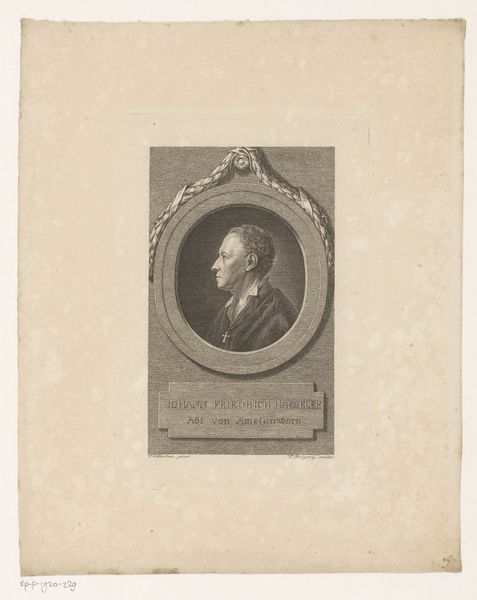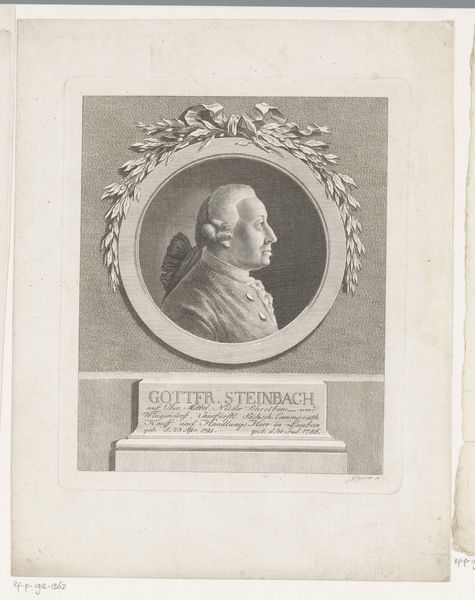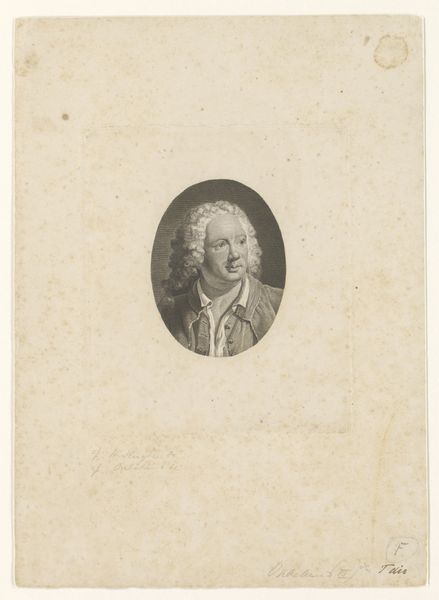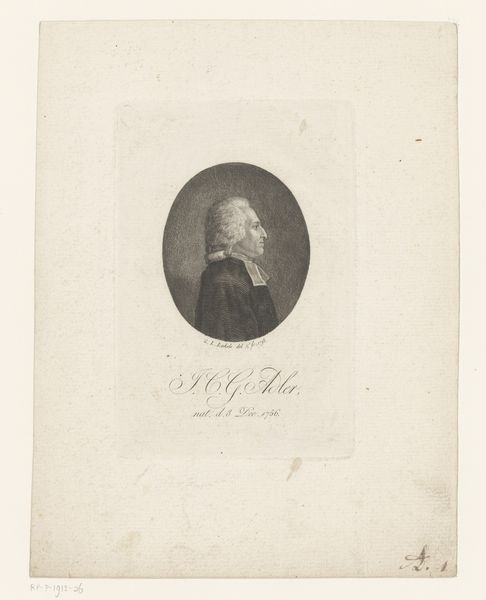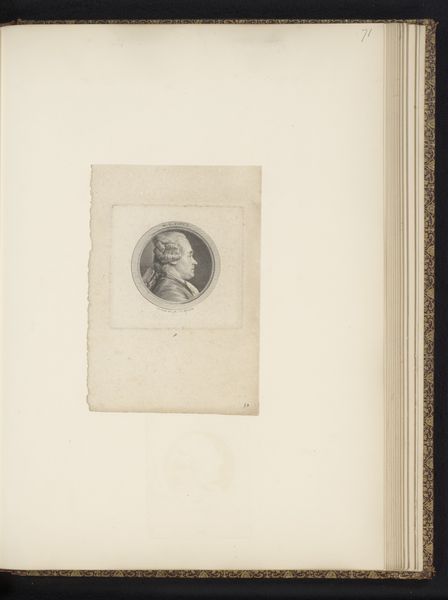
print, engraving
#
portrait
#
neoclacissism
# print
#
history-painting
#
engraving
Dimensions: height 149 mm, width 92 mm
Copyright: Rijks Museum: Open Domain
Curator: Welcome. Today, we’ll be discussing a neoclassical print from around 1794, residing here at the Rijksmuseum. It's entitled "Portret van Gottlieb Christoph Harless" and it’s an engraving by Christoph-Wilhelm Bock. Editor: Well, he certainly looks important. And judging by the wig, periwig, or whatever magnificent fluff that is on his head, I'd hazard a guess that we're looking at a man of means. There's something quite refined, yet faintly aloof about the subject’s expression, isn't there? Curator: Indeed. The print meticulously captures Harless’s profile, emphasizing line and form characteristic of neoclassical portraiture. Observe how Bock employs the engraving technique to render textures, like the fabric of the sitter's coat. Also, note the circular frame containing the profile. What is your impression of the geometry here? Editor: The circle brings a feeling of self-containment to it, doesn't it? Like he's in his own world, thinking deep thoughts about... I don’t know, philology or theological matters maybe? I wonder what he would make of being preserved for eternity this way. Must feel quite odd to be etched like that, for every person who might walk in the gallery after. Curator: Such portraits were common among the educated middle class and scholarly elite of the time. Harless himself was a prominent German professor, theologian, and philosopher. This work uses conventional tropes that served as status symbols during the late eighteenth century, but Bock also demonstrates real technical skill in rendering the likeness of this well-known individual. Editor: You've got a point. This reminds me of those miniature portraits people used to wear. Encapsulated grandeur, shrunk down to fit on your person like a talisman. Still, there's a part of me that hopes old Gottlieb there had a bit more mischief in him than the portrait lets on. Curator: Ultimately, this portrait reflects the Enlightenment's emphasis on reason, intellect, and civic virtue. The artist offers the viewer an image that mirrors a particular ideal: cultivated, distinguished, and morally upright. Editor: True, it's a testament to its time, rigid lines, and composed subjects... All the same, you do wonder what life the guy lived. Maybe he painted his walls in wild colors? Curator: (chuckles softly) A tantalizing thought to play on indeed! Well, hopefully, through our brief discussion today, listeners were granted new perspectives when faced with this seemingly modest artwork. Editor: Agreed! Even the quietest image can set your thoughts spinning in new directions. I might even get myself a fancy wig…
Comments
No comments
Be the first to comment and join the conversation on the ultimate creative platform.

